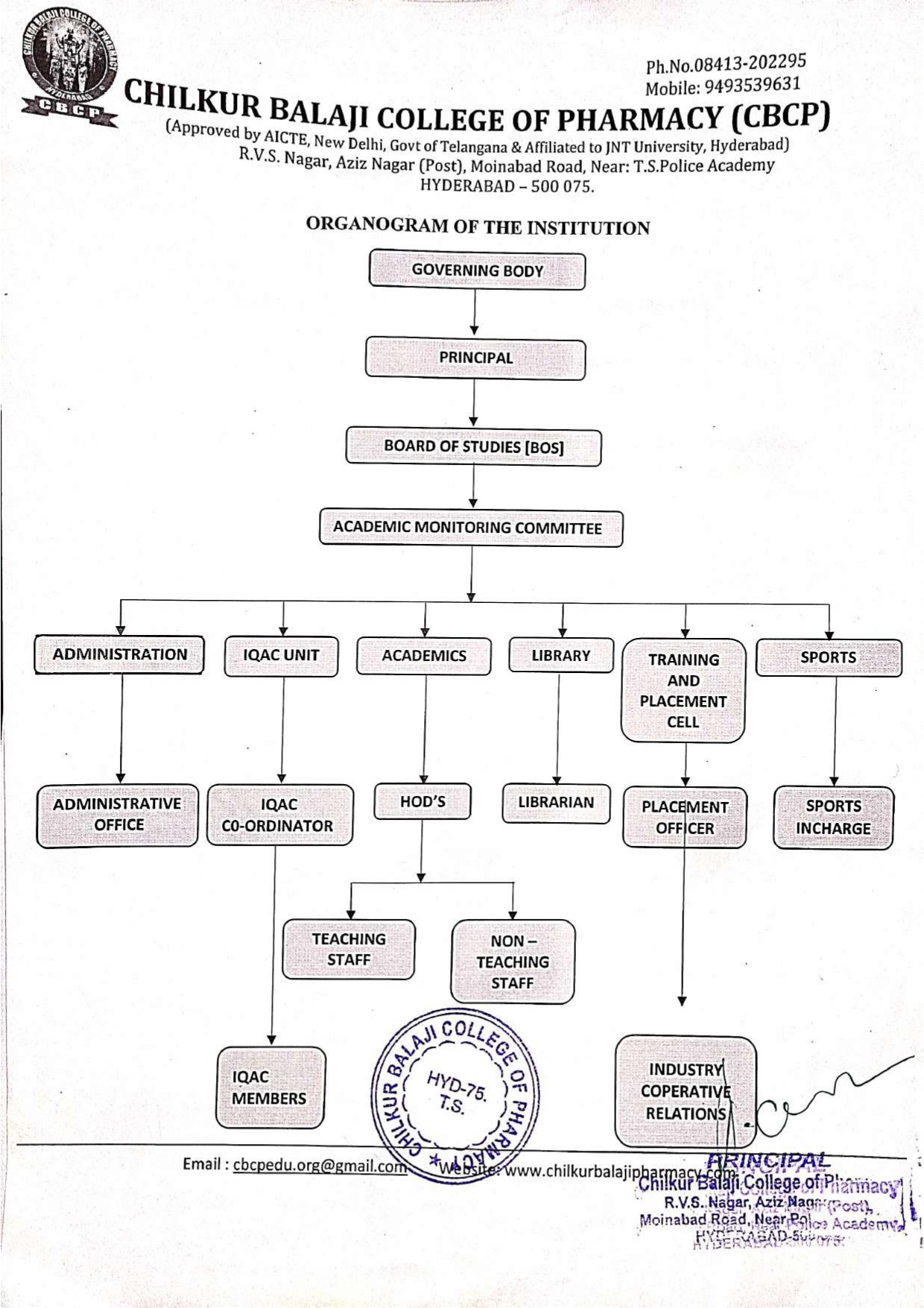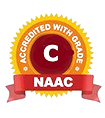
Organogram of the Institution
Chilkur balaji College of Pharmacy (CBCP) has a well-organized hierarchical edifice to upkeep any executive proceedings that are vibrant and trustworthy with its commitments and can support effective resolution making. Institution upholds intelligibility in organizational structure to execute processes that are reliable with effective resolution. The college has well defined organization structure directed by Governing Body (GB) and is instituted as per the by-laws of concerned authority.
The organization lends itself to institutional capacity and educational effectiveness through various committees. Keeping in view of all the stakeholders more on students an effective administrative system is structured and the over-all organization of the Institutional Management is categorized as academics and administration. The Institute has instituted various committees at institute and department level for the effective functioning of the organization.
The Principal chairs the meetings of various statutory and nonstatutory bodies/committees viz., College Academic Committee (CAC), Internal Quality Assurance Cell (IQAC), Anti-ragging Committee, Grievance Redressal Cell, Malpractice Prevention Committee, Placement Committee, Research committee The Principal, Academic Director and HODs, with the assistance of faculty members, evaluate the progress accomplished and complications faced by various committees. The operative motto of the institutional bodies was not only dynamic but also proficient in generating perceptible outcomes. Apart from the existing, appointments and service rules along with procedures are followed thoroughly. Service rules has been clearly demarcated and circulated for Appointment of Faculty, Working Hours, Late Coming, Permissions, Leaves -Absence, Conduct – Discipline, Dress Code – Decorum and Departmental Responsibilities.
Pertaining to Institute development, the management has always been in receiving and regarding any opinions and proposals from the faculties in taking institution in advance. All the faculty members were entrusted suitable responsibilities in all the committees. Organizational Structure is established as per the hierarchy from top management to down the level evidently demarking the duties, responsibilities, accountability and authorities at each and every stage. Work culture of the Institute has been reinforced through the excellent team work involving the Governing Body of top management, Principal, Academic monitoring committee, HODs, teaching, non-teaching, and students. Vision, Mission and Quality Policy of the Institute has been very clear at any point of time in nurturing the institute as premier one in offering Quality Education.
The over-all structure of the Institutional Management is categorized as academics and administration.The intentions and roles of the committees are organized as per the guidelines of the head of the institution. Principal being the chairperson of all administrative and academic committees’ monitors all activities of the institution in co-ordination with the Academic Director. Faculty members were being encouraged regularly to attend skill development AICTE/UGC sponsored FDP’s, PCI QIP’s and various professional activities to improve their expertise besides conduction of professional activities in campus on various timely topics of prominence. Faculty members were encouraged to get enrolled for Ph.D Programs and also have membership of Pharmacy Professional bodies like APTI.
Organogram


